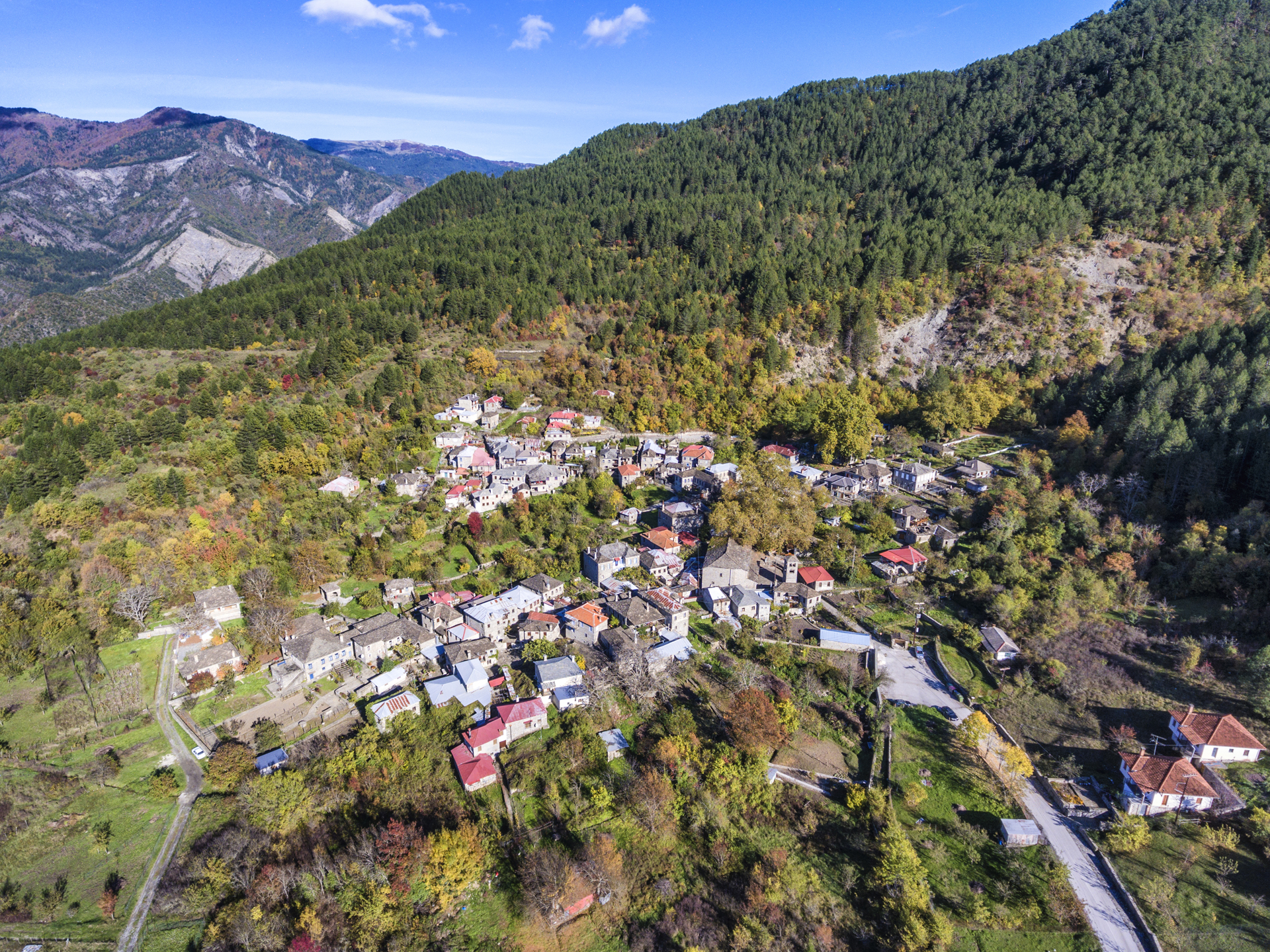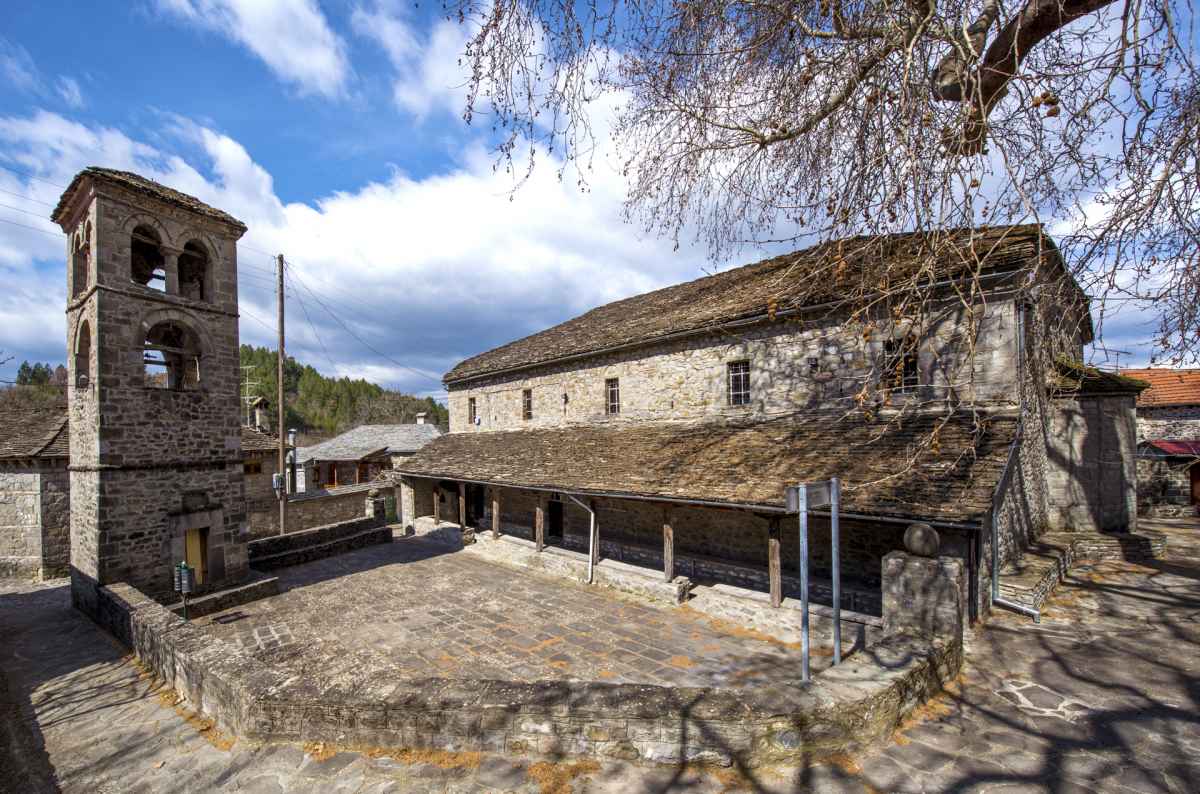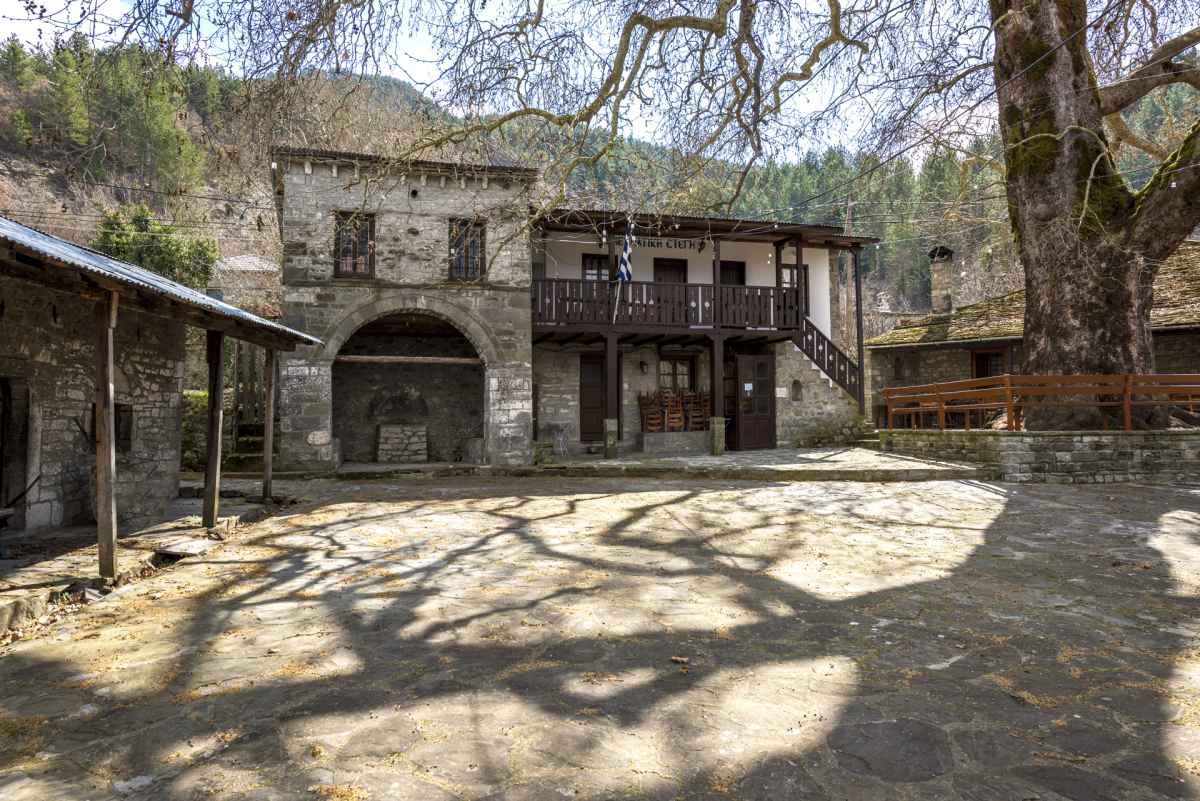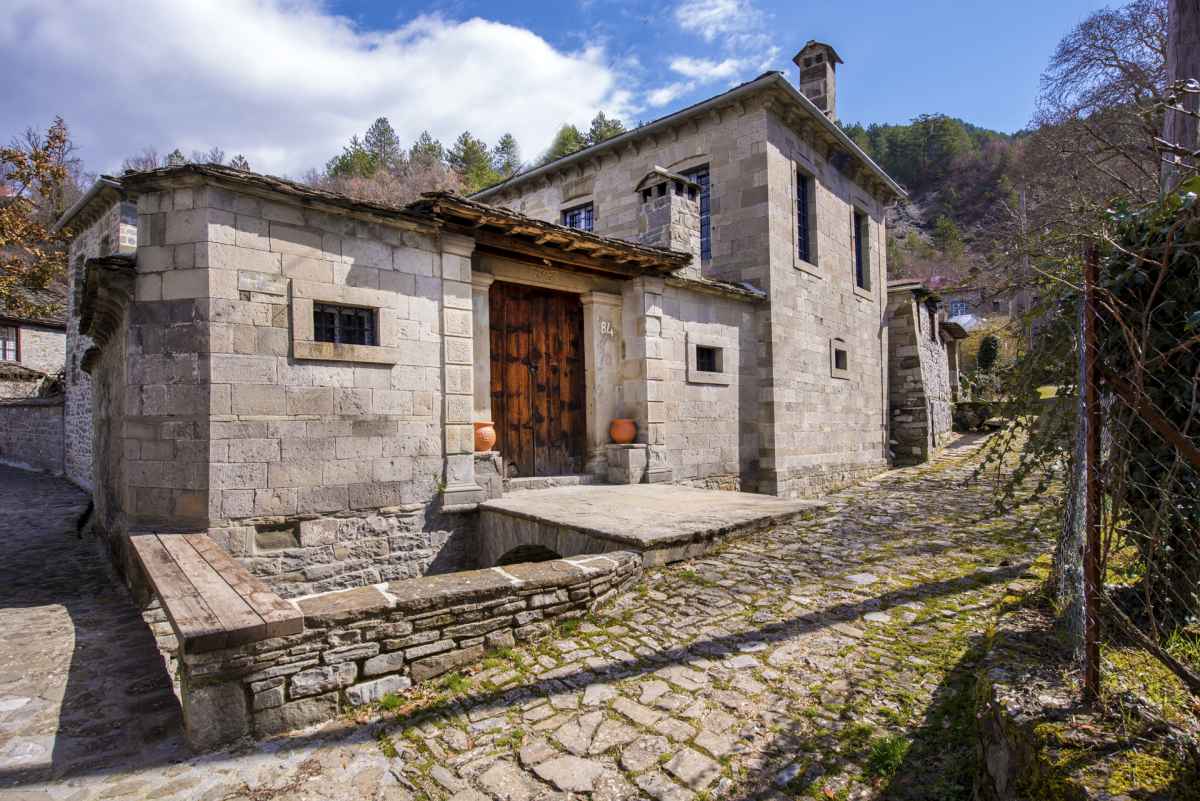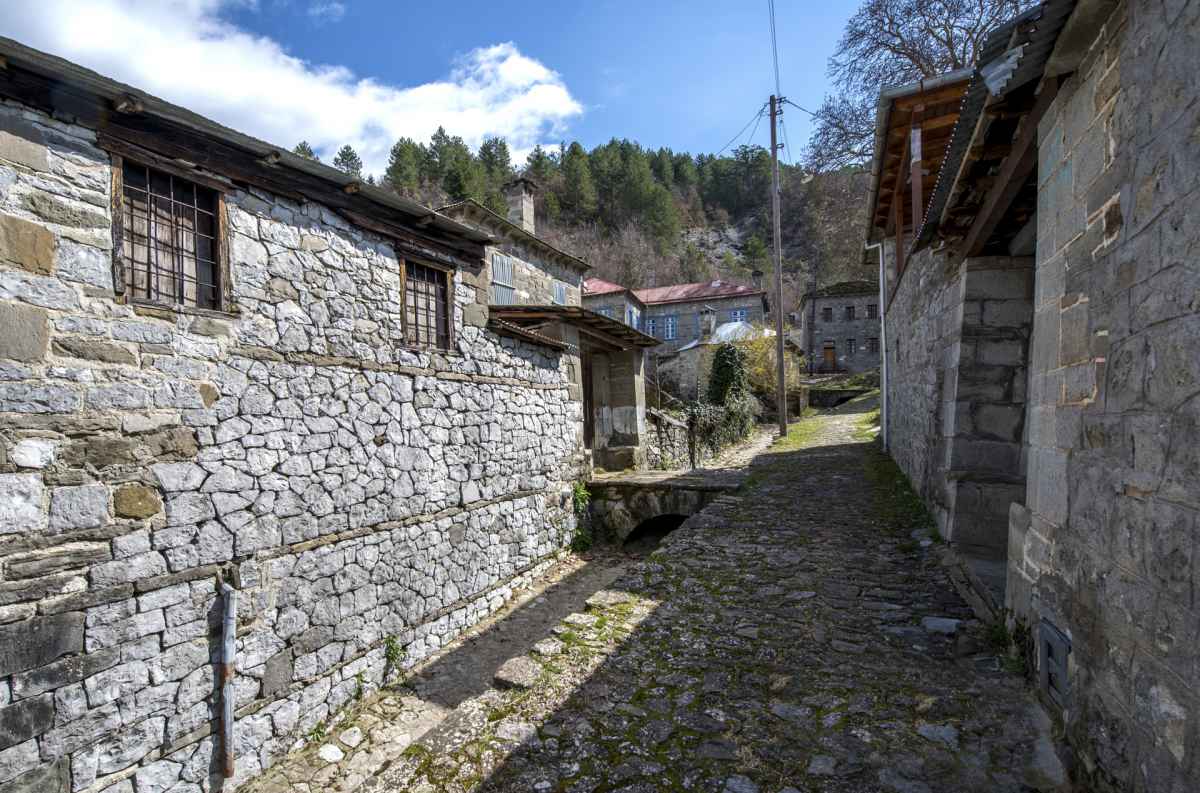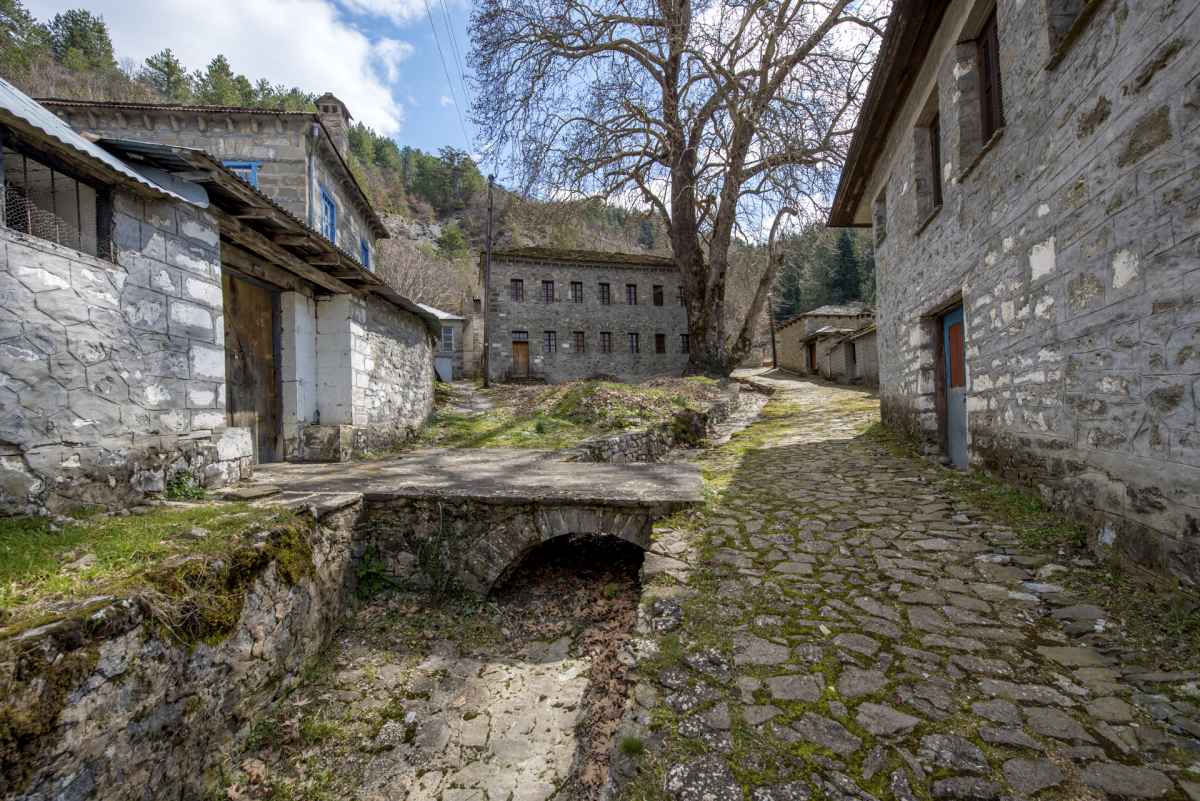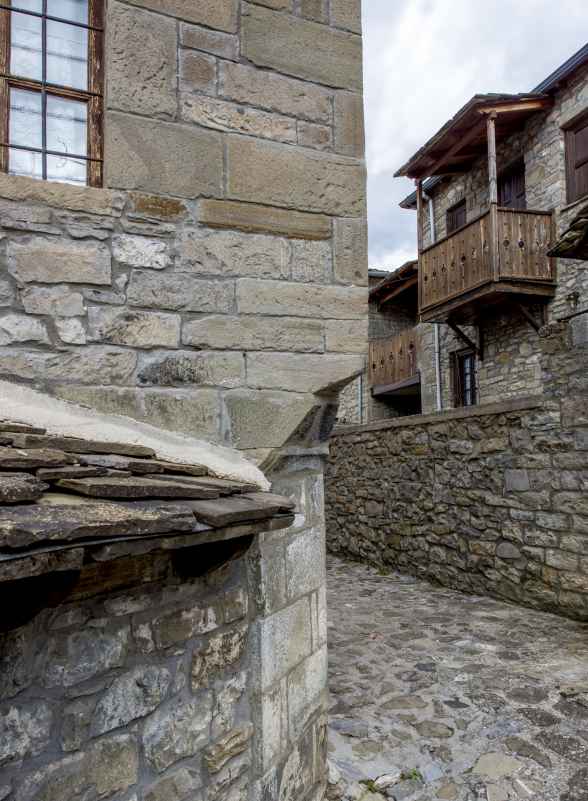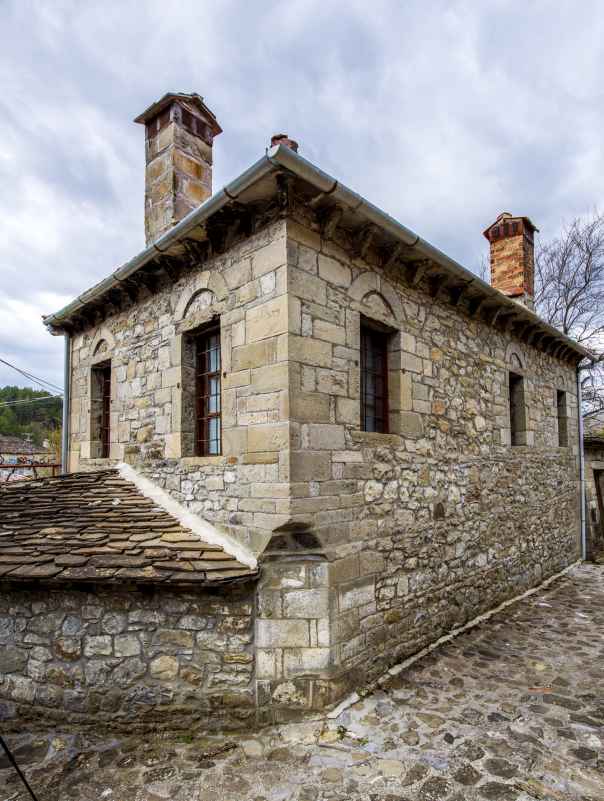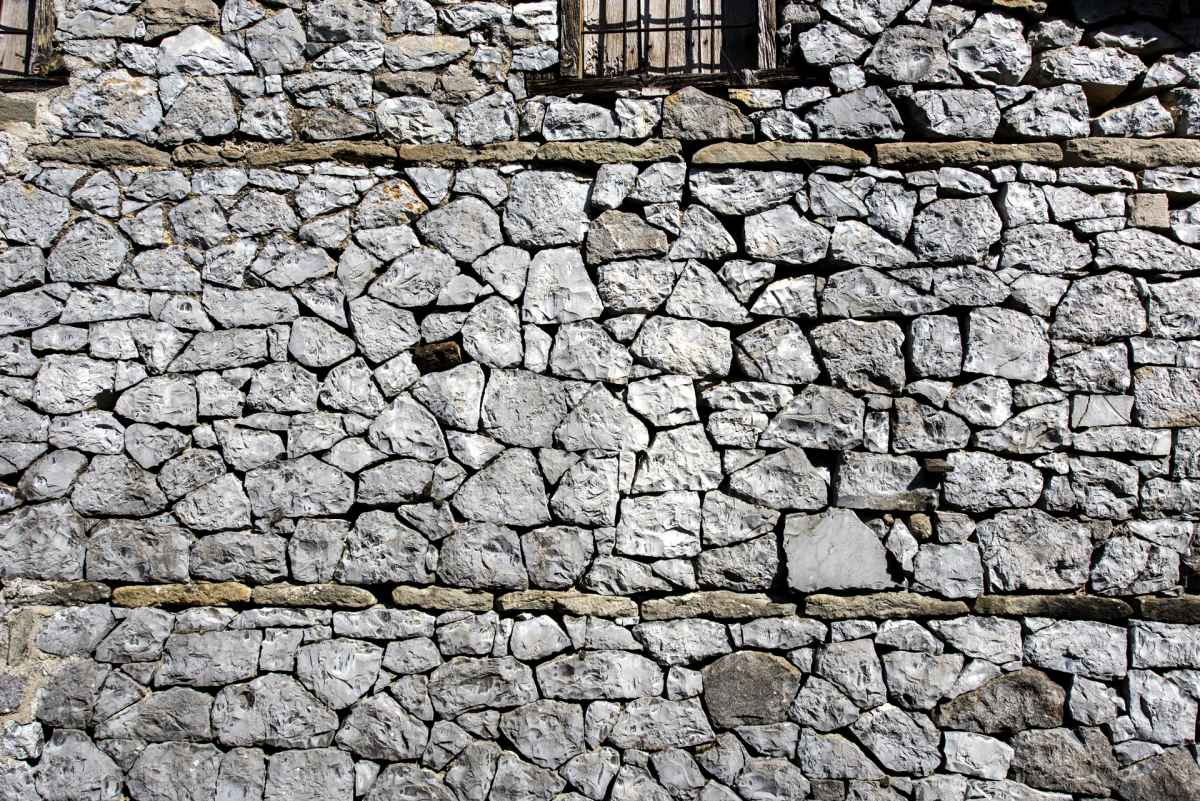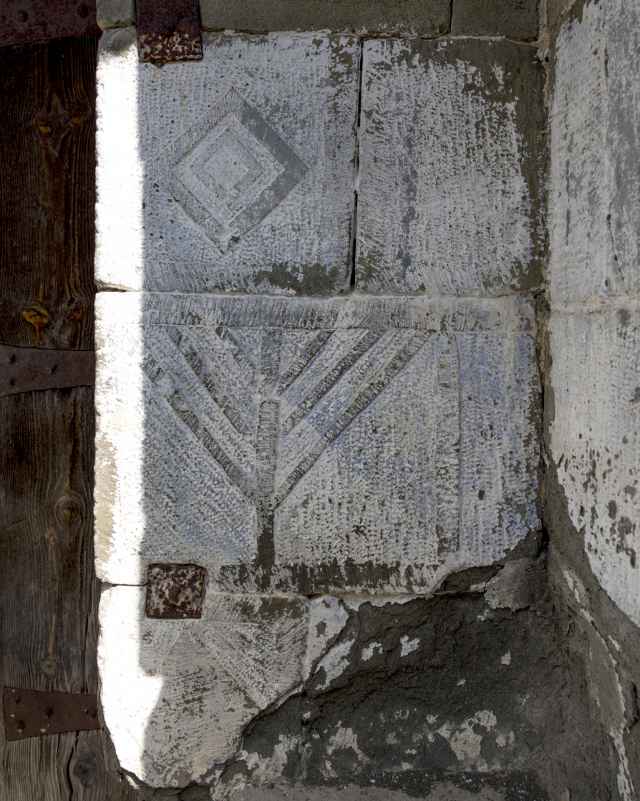Video
2.1 Village
Gannadio is situated at the foot of Smolikas located 30 km north of Konitsa to the old road of Ioannina Kozani. It has few permanent residents whose number is growing especially during the summer months when return the expatriates of Gannadio. Inside the village are been dominated the large buildings of Girls’ school and of the primary school, which were constructed at the expense of the legacy of Spyridon Xynos and the main church of the Archangels with the characteristic bell tower on the edge of the paved square. The building of the Guest house and the Community office and the perennial plane tree, the perimeter of which reaches six meters are of particular interest, . The village is best known for its architectural richness and since 1979 has been included in the list of traditional communities.
2.2 History
According to tradition, the village emerged from the combination of smaller settlements, originally located at “Soupostiani” at the foot of Mount Gyftissa. A smallpox epidemic that occurs around 1800, will force their inhabitants to move south and settle in three separate villages, Gannadio, Messaria and Monastery (Botsifari). These three villages together formed formerly Molista, a name attributed to nowadays in Messaria. According to oral testimonies before the First World War the village was widely known as the community of Molista, Gannadio district or Gannadio of Molista. The location of the village is characterized as nodal while during the Ottoman Greece will play a key role as was the basis of judges and tax collectors and was the only village along Vourbiani throughout the province of Konitsa where there was a School.
Most residents were engaged in agriculture and animal husbandry and from the village came several artisans of Stone, who worked mainly in Zagori headed by the families of Naka and Tsanades Throughout time many of the residents will migrate abroad (Romania) ehere will distinguish in trade, boosting financially their homeland through donations and legacies, with the most typical case that of Nicholas and Spyridon Xynos. Nicholas Xynos, with his legacy of 1845 bequeathed to Gannadio, the property he had acquired in Bucharest, while his son of Spyridon, bequeathed the additional income of 135,000 francs, a sum which is intended for the maintenance and operation of the School and the Girls School. The legacy of Xynos was active until 1940 when it will crash because of the hard conditions due to the Occupation. Gannadio will maintain its glory until the first postwar decades when it will decline, together with the other villages of the region, because of the intense migratory flow.
2.3 Architecture
Gannadio stands out among others for its unique architecture which is directly related to the history of the village. A main road runs the village which starts from the square and then branches out to individual neighborhoods (machalades), resulting again in the square, giving the impression of a defensive, fortress provision which is reinforced by the fact of direct neighborhood of individual houses. Along this artery are identified shared fountains. The neighborhoods or machalades get their name from the head of household (fara) and between the houses of the village stands the fortified residence of Vangelis Xynos family and the home of Giousos family every stone of which is said to cost a golden pound. The houses were usually of two or three floors with the lower floor (basement) to serve as warehouse and stable, and the upper floor (upper level) was used as a family residence and included the “krevvata” a place used for gatherings and the warm winter room with fireplace known as “mantzato”. Inside the houses were plastered with lime plaster and had wooden ceilings with designs, large fitted wardrobes (traditional cupboards) and windows with iron bars crossed for security reasons.
2.4 Culture
Gannadio is a village that gathers inside all distinct elements of the traditional architecture of the stone masons while reflecting the morals and the color of a bygone era. Its residents were involved early with trade and banking bringing wealth and prosperity air in their hometown. Among them stands out Spyridon Xynos with the money of whom was built the School, the Girls’ School and Eudokia Tsertou eho came from Zagori and lived in Egypt. Her husband came from Gannadio and in 1970 he donated to the village two properties in Athens with which could be endowed indigent young girls and be strengthened financially needy students. On the paper of the donation they were asking to become the home of the Textile School. An index of economic and intellectual level was the foundation of cultural association in 1933 with expenses of whom was planted the hill of Tziantora with acacia trees. With personal work were also planted two hundred trees of Canadian poplar and acacia trees in the village streets, Livadia and Tziantora with the initiative of Theodoros Goutos. The association was established in 1976, with their basis in Athens taking the task of finding resources to support charitable projects. Several, however, were the villagers who worked with the art organizing their own workshops. Known among others were the crowds of Alexis Papadimitriou and Apostolos Dokos who worked in the region.
2.5 Religion
In the central square of the village opposite the building of Ameliko dominates the imposing church of the Archangels. In the same area there was a smaller temple until 1870 when it was built in the place of the old existing monumental basilica of Archangels to meet the increased needs of the village because of population growth. The Church of the Archangels with its 9 domes is one of the most distinctive religious architectural monuments in the area of Konitsa. It features frescoes of Nikolaidis painter from Gannadio while the iconostasis was brought according to tradition a night from Gjirokastra. According to tradition, in 1930 there was a miracle according to which the Crucified cried and as a memory of the miracle every year is organised a religious festival on 20 August.
In the courtyard of the church stands the ornate spire, built in 1856 by a group of craftsman Charisiadis The day of the feast of the Archangels there was a big festival in Gannadio with the participation of residents from the surrounding area. A benchmark of the religious sentiment of the residents of Gannadio however constituted the Monastery of Virgin Mary in the neighboring village of Molista. The Monastery of the Virgin Mary is built just above the village of Monastiri. The inscription which is preserved in a built-plate indicates the year of original building in 1672 and then in 1819. It is a basilica with a gallery while inside the main temple are preserved two stone candelabra of 1831.
2.6 Nature
The main production in the village in the past was that of wheat amounted to 300 kilos per family, while in the past it was insufficient and households were buying. Gannadio like other villages was famous for its wine. It produced 130,000 kilos of grapes and there are several varieties. The forest that existed around the village thoroughly protected and prohibited from felling except two days a year when it was allowed to cut wood in the Soupostiani region.

